News Around NIDDK
NIDDK participates in novel partnership to speed validation of disease targets
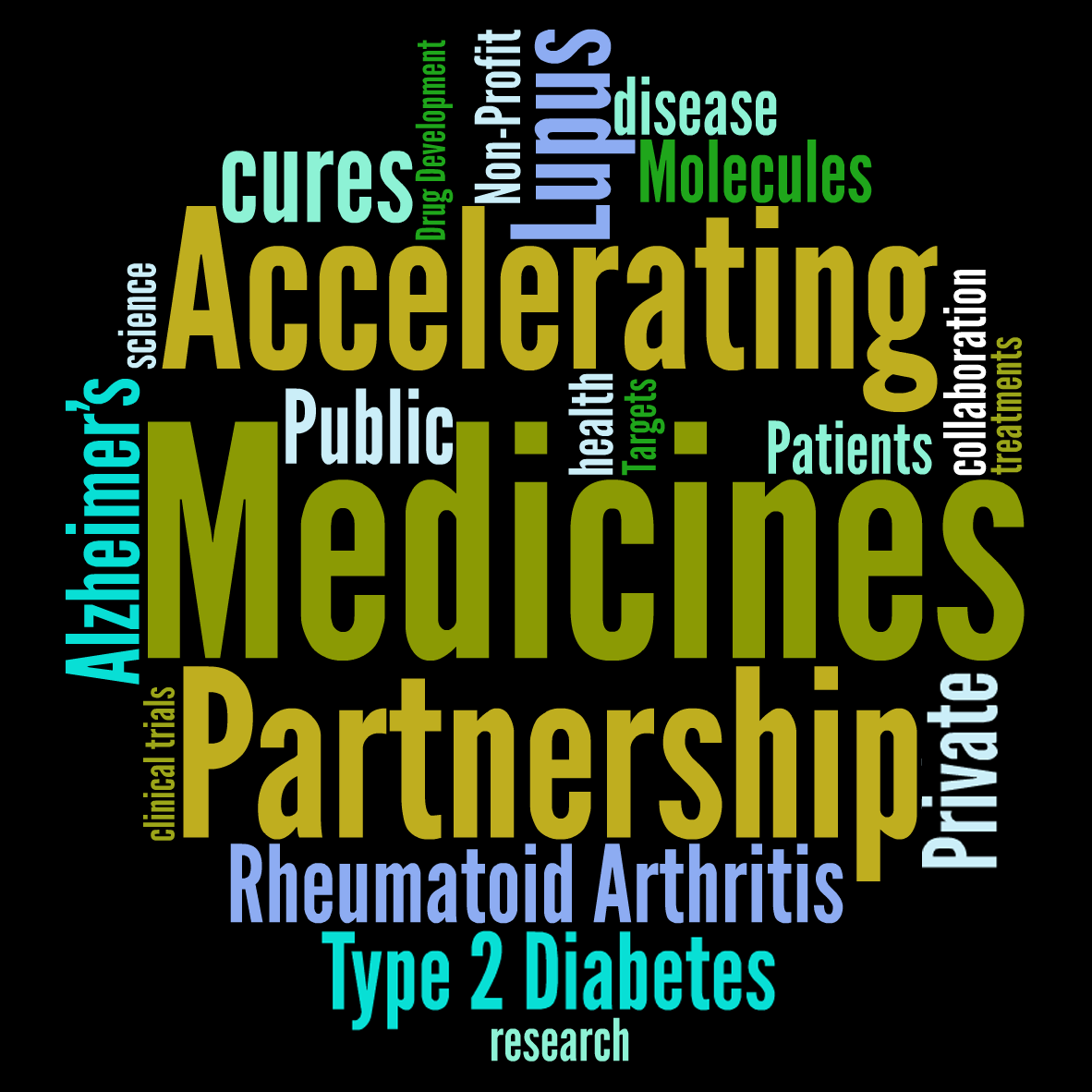
NIH, along with 10 pharmaceutical companies and several nonprofit organizations launched an unprecedented partnership to transform the current model for identifying and validating the most promising biological targets of disease for new diagnostics and drug development.
The Accelerating Medicines Partnership® (AMP®) program aims to distinguish biological targets of disease most likely to respond to new therapies and characterize biological indicators of disease, known as biomarkers. Through the Foundation for the NIH, AMP partners will invest more than $230 million over five years in the first projects, which focus on Alzheimer’s disease, type 2 diabetes and the autoimmune disorders rheumatoid arthritis and systemic lupus erythematosus (lupus). These milestone-driven pilot projects could set the stage for broadening the AMP program to other diseases and conditions.
NIDDK will have a leadership role in advancing the type 2 diabetes project. NIDDK Director Dr. Griffin P. Rodgers said he was immediately enthusiastic about the partnership’s potential. “We need more targeted drug therapies to treat diabetes,” he said. “While multiple diabetes drugs are available that help stabilize the disease, people still progress to painful and costly complications. This novel collaboration is an opportunity to improve the lives of people with diabetes and those at risk.”
A critical element of the partnership is the agreement that the data and analyses generated will be made publicly available to the broad biomedical community.
“Currently, we are investing a great deal of money and time in avenues with high failure rates, while patients and their families wait. All sectors of the biomedical enterprise agree that new approaches are sorely needed,” said NIH Director Dr. Francis S. Collins. “Recent dramatic advances in basic research are opening new windows of opportunity for therapeutics...But this challenge is beyond the scope of any one of us, and it’s time to work together in new ways to increase our collective odds of success.”
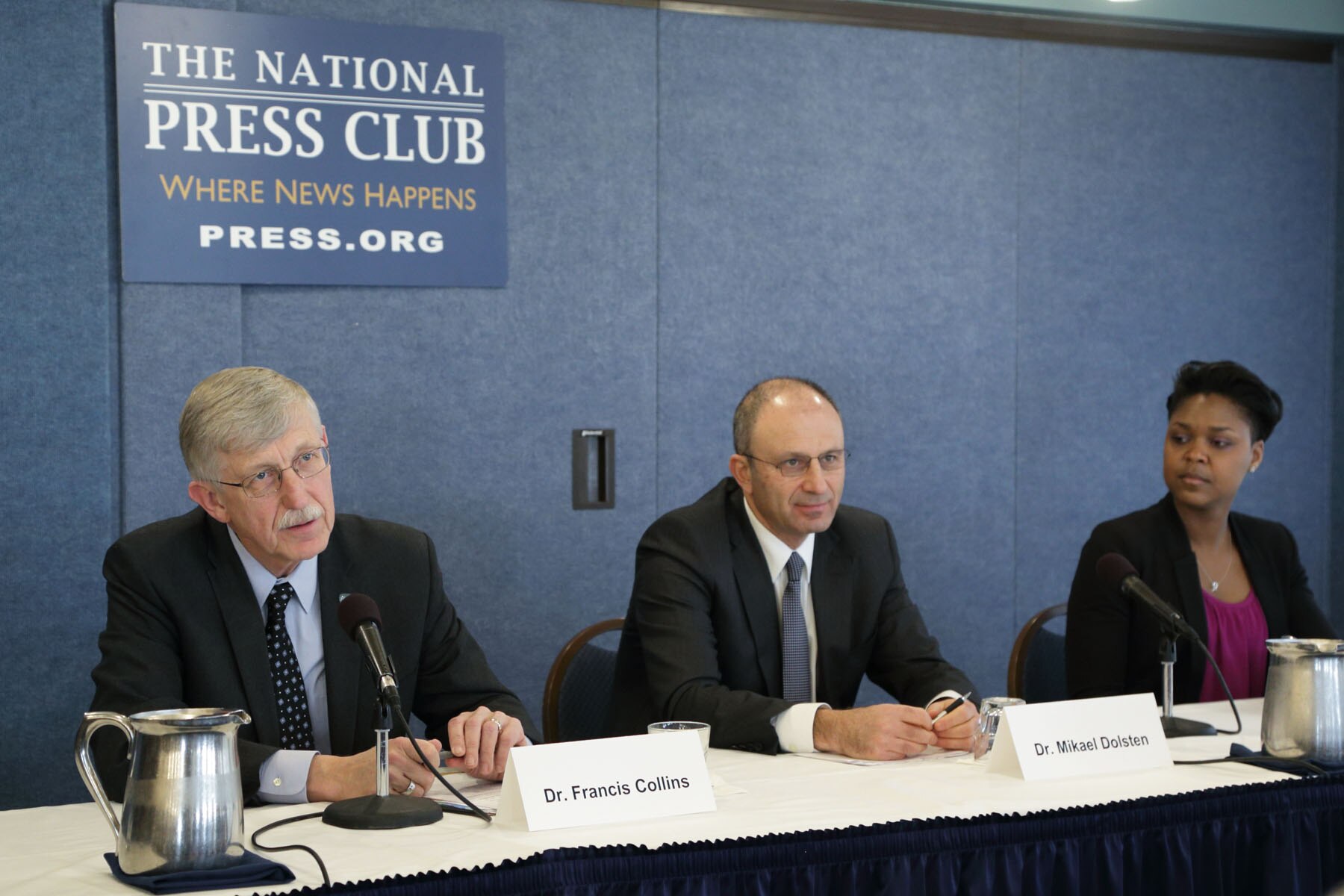
The type 2 diabetes section of the partnership will focus on two goals. The first will encourage the building of a virtual library of DNA sequences, functional genomic and epigenomic information, and clinical data from studies on type 2 diabetes and its heart and kidney complications. This knowledge portal will include existing and new data from studies involving 100,000–150,000 people, with the goal of helping recognize the most promising therapeutic targets for diabetes.
The second type 2 diabetes-related project will focus on DNA regions that might be critical for the development or progression of type 2 diabetes, and will search for natural variations in targeted populations that might predict the likelihood of success of drug development aimed at these targets.
“The AMP program rallies scientific key players of the innovation ecosystem in a more unified way to address one of the key challenges to biopharma drug discovery and development,” said Dr. Mikael Dolsten, president of Worldwide Research and Development at Pfizer.
“We’re leveraging our expertise to quicken development of therapies to help the 400 million or so people with diabetes worldwide and the many more at risk for the disease,” Rodgers added. “I see this as a chance to jumpstart diabetes drug development across the field.”
Learn more about AMP.
U.S. Representative visits NIH
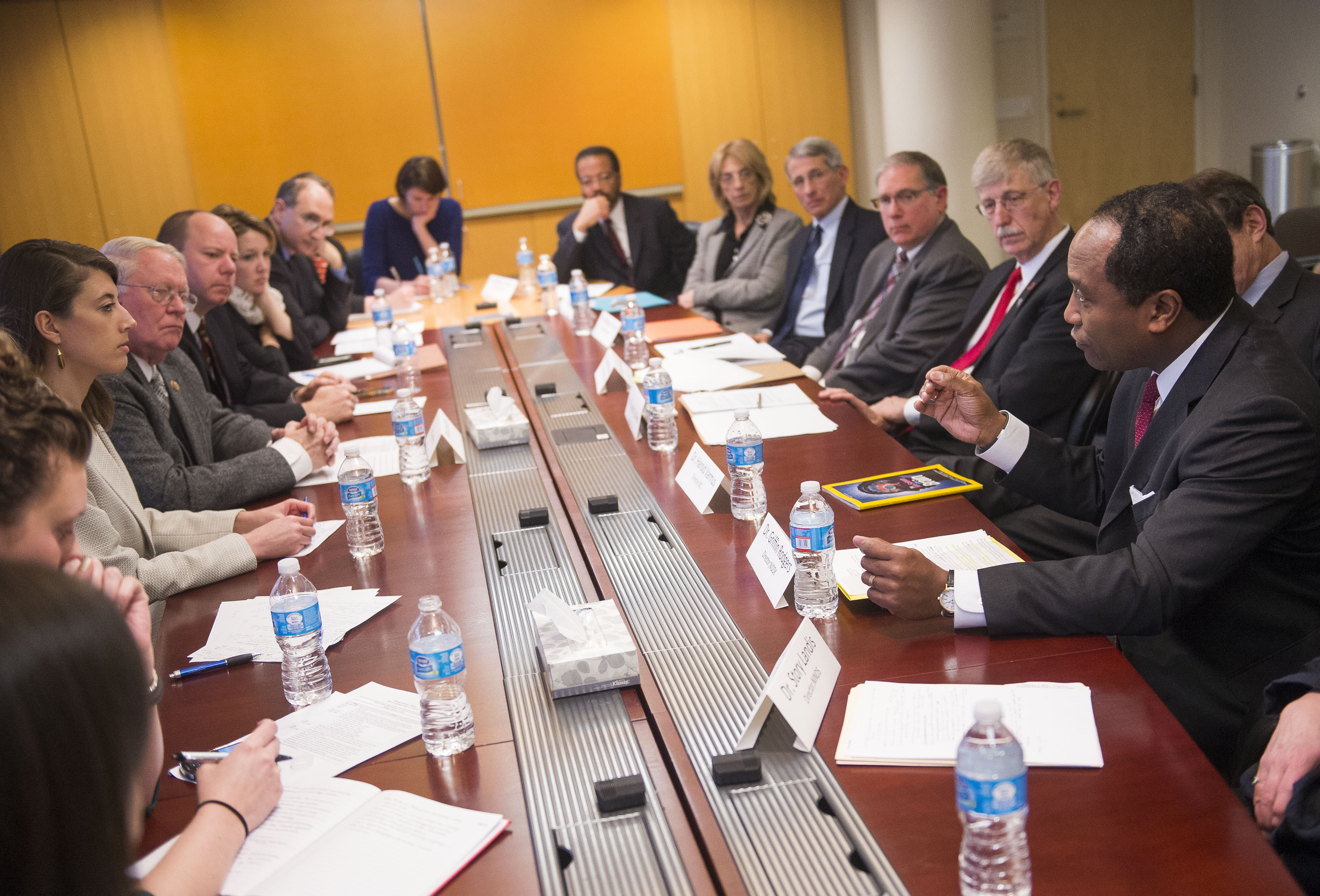
Rep. Joe Pitts (R-PA) and staffers visited NIH on Feb. 3. Here, NIDDK Director Dr. Griffin P. Rodgers participates in a roundtable discussion including NIH Director Dr. Francis S. Collins and five other institute directors or deputy directors. Rodgers (far right) provided Pitts (fourth from left) with an update on NIDDK-supported research toward developing artificial pancreas technologies for people with type 1 diabetes, including how the NIDDK collaborates with the FDA.
Silver anniversary for NIDDK’s U.S. Renal Data System
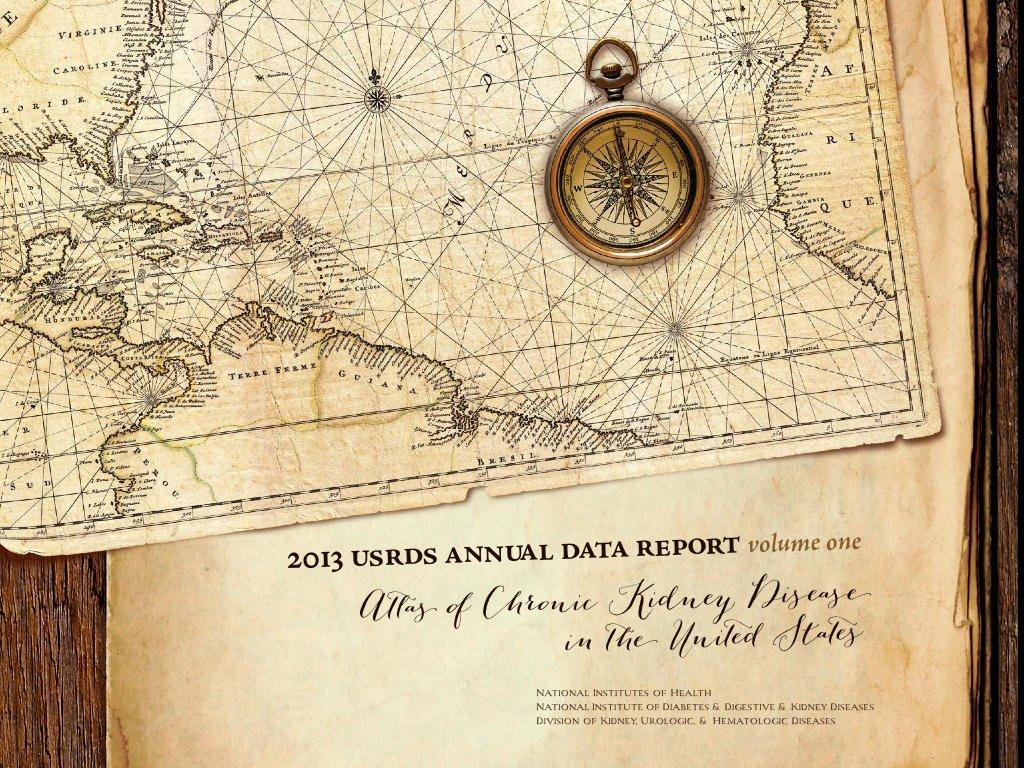
The NIDDK-supported U.S. Renal Data System (USRDS)—an internationally emulated registry that collects, analyzes and distributes data about chronic kidney disease (CKD) and end-stage renal disease (ESRD)—celebrates its 25th anniversary this year. The registry receives data from the U.S. Centers for Medicare and Medicaid Services (CMS) on all patients treated for ESRD in the U.S., and receives CKD data from several sources. The USRDS responds to nearly 200 data requests annually from investigators. Since its inception, other nations have launched their own registries, yet the USRDS remains the model and often a key starting point for kidney disease research.
Over the years, the structure of the USRDS has evolved, said NIDDK’s Dr. Paul Eggers, co-project officer for the USRDS. “Initially one coordinating center handled everything,” he said, but now two special study centers act in unison with a coordinating center. “This new approach has become the blueprint for how the USRDS functions today: a seasoned, well-oiled machine that continues to set the pace for disease registries all over the world.”
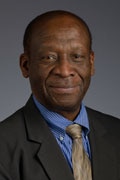
Dr. Lawrence Agodoa is co-project officer of the USRDS and director of NIDDK’s Office of Minority Health Research Coordination. “Before we started the USRDS project in 1988, there were only two similar registries,” he said. “Both relied on voluntary answers to questionnaires they sent out, whereas the USRDS had access to 100 percent of data” directly from CMS. Each year the USRDS team presents its newest analyses of data, including international comparisons, at the American Society of Nephrology’s Kidney Week Meeting. “It’s really fascinating to see,” Agodoa said. “The USRDS is the only disease registry to feature data compiled in one place from most of the countries that have registries.”
Findings from the USRDS have improved the health of people with kidney disease in many ways. For example, early analysis of USRDS data showed that people with end-stage renal disease who received catheters for dialysis had more infections and higher death rates than those who received fistulas. This discovery led to the requirement that dialysis centers use a fistula when possible; the CMS Fistula First initiative helped implement the practice.
Another finding from earlier analyses showed that African Americans have a higher rate of ESRD than other races primarily due to hypertension. Based on this, the NIDDK designed the African American Study of Kidney Disease and Hypertension, which found that African Americans who were put on calcium channel blocker anti-hypertensive drugs progressed more quickly to end-stage renal disease than those on ACE inhibitors and beta blockers. The results changed medical practice for treating African Americans with hypertensive kidney disease.
Looking to the future, researchers anticipate that other findings from the USRDS, in collaboration with researchers worldwide, will help improve clinical practices and understanding of kidney disease. One current collaboration seeks to build or improve registries in the Caribbean and Mexico.
“When we created the USRDS, we envisioned a comprehensive database that investigators everywhere could use to improve public health and conduct life-changing research,” said Agodoa. “I’m proud to say that our vision has largely been realized.”
STEP-UP lab opens in Palau
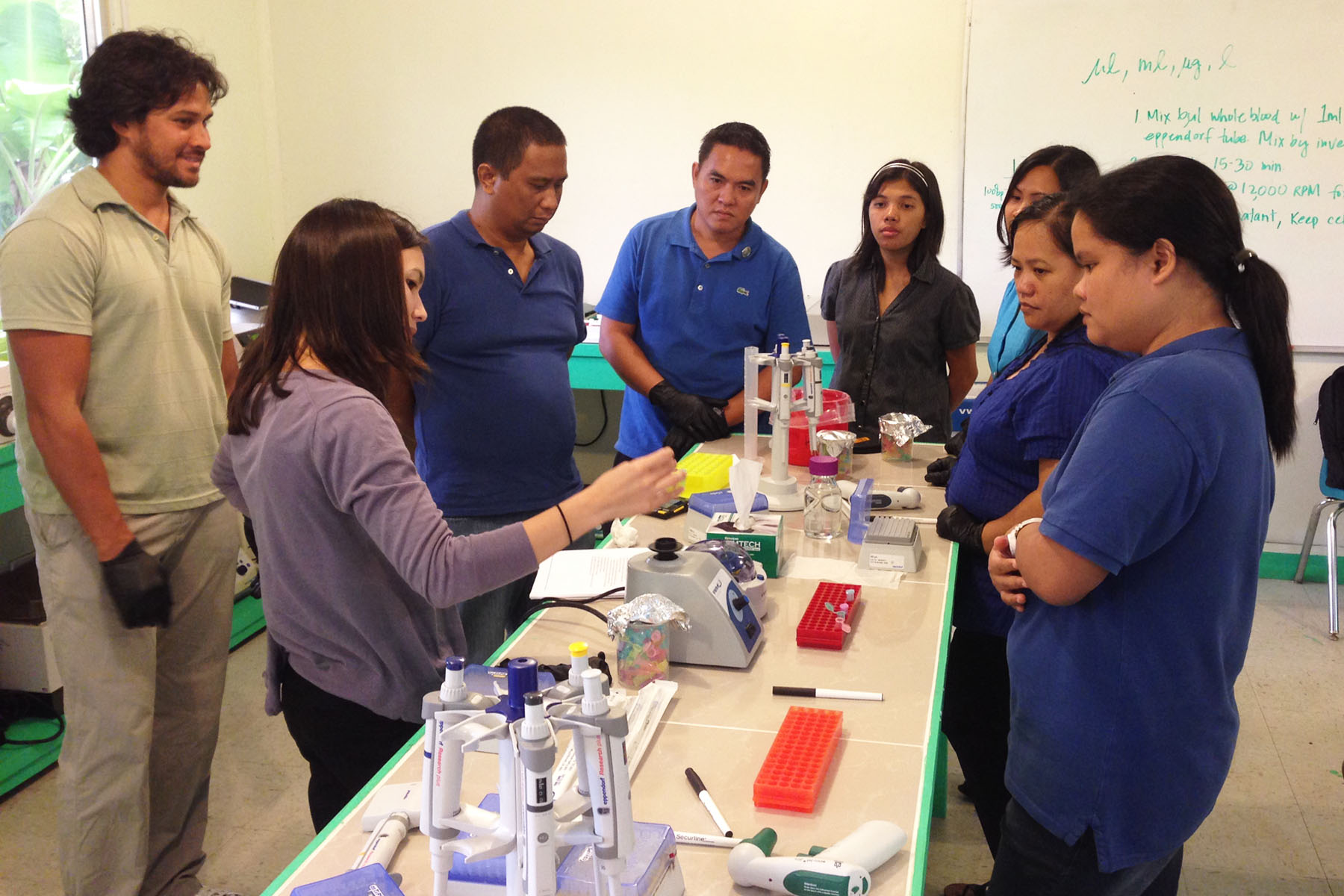
At an official ceremony Jan. 8, the NIDDK Short-Term Research Experience for Underrepresented Persons (STEP-UP) program opened its fifth and final lab in the Pacific region, the Pacific molecular biology laboratory in Palau. The goal of the STEP-UP program is to build and sustain a biomedical, behavioral, clinical and social science research pipeline focused on NIDDK mission areas. Pictured, local science teachers are being trained to use the equipment. The teachers will serve as mentors, helping local STEP-UP students gain biomedical research training without having to travel far from home.
Getting to know: Dr. Herbert Tabor
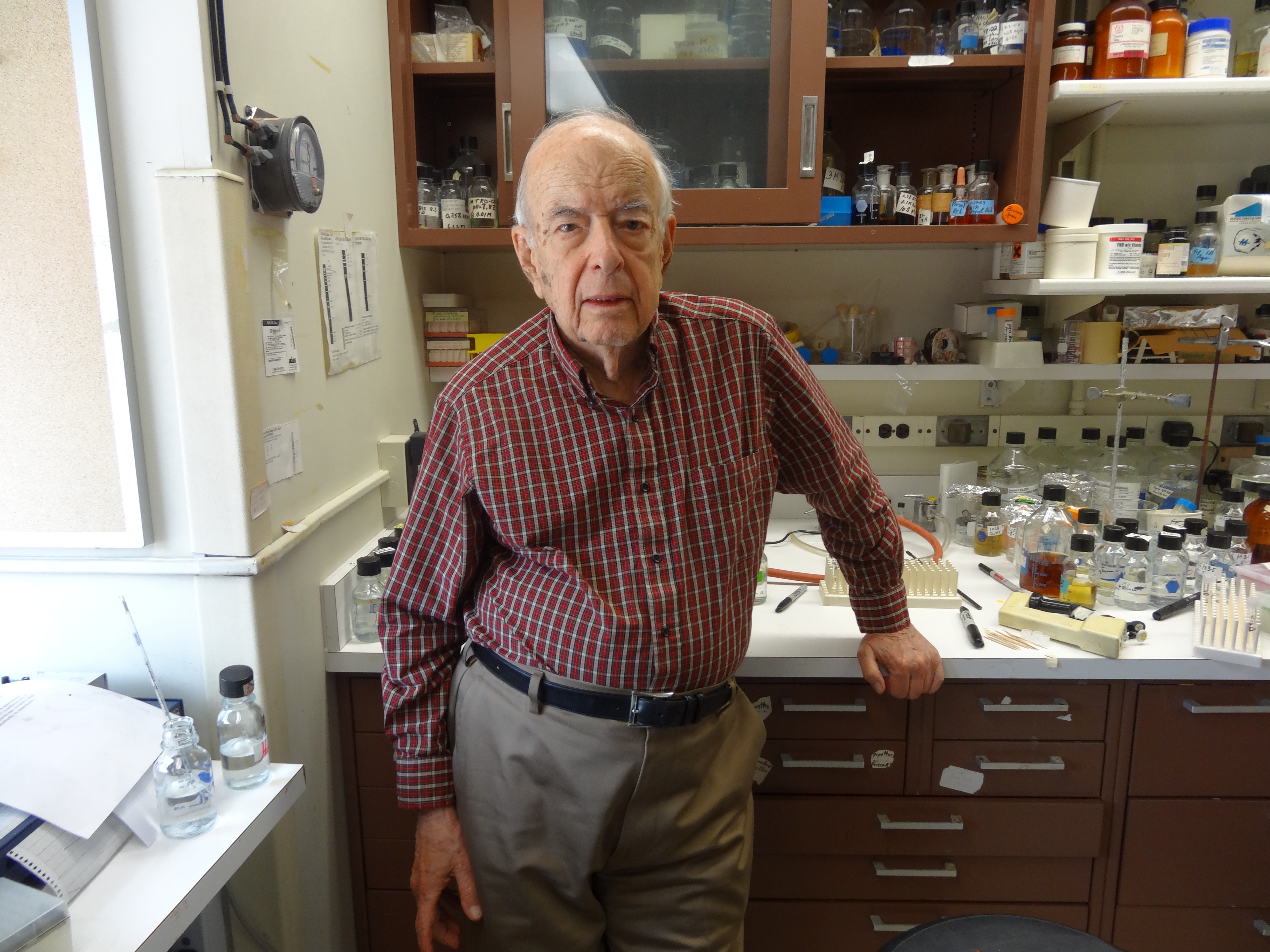
Dr. Herb Tabor, senior investigator in NIDDK’s Laboratory of Biochemistry and Genetics, recently celebrated 70 years at NIH. In a letter, President Barack Obama thanked Tabor for his “extraordinary commitment…to advancing science through public service.” Tabor spoke with Krysten Carrera about his career and accomplishments.
What were your first impressions of NIH when you started on September 16, 1943?
As a Public Health Service physician on transatlantic convoy duty during World War II, I was very excited to learn that my next assignment was to NIH—which was still just one big institute. I was amazed by the level of teamwork among the scientists, something that has remained constant through the years.
What was it like to collaborate with your wife and lab partner, the late Dr. Celia White Tabor?
I was lucky to be able to work closely with Celia, who started as an investigator at NIH in 1952, for over five decades. Together we researched polyamines, which are short polybasic compounds present in almost all biological materials. Our passion for science impressed upon our children: our oldest son is a physician, and another son is a biochemist. One of our granddaughters became a geneticist.
What work are you most proud of?
When I started studying polyamines, almost nothing was known of the biosynthesis and function of the compounds spermidine and spermine. My colleagues and I were the first to discover their biosynthetic pathway and study the function of the genes involved, as well as to develop sensitive assay procedures. This early research has spawned over 13,000 papers involving spermidine or spermine from studies conducted in multiple labs. In my lab we continue to investigate how polyamines are formed and metabolized. What we have learned has enhanced our understanding of biological processes.
You were named editor-in-chief for the Journal of Biological Chemistry in 1971 and are now editor-in-chief emeritus. How have scientific journals changed over the years?
The main difference is the way information is disseminated. People now do most of their reading on the internet. The JBC has always been forward-thinking in that regard: in 1995, we were the first biological journal to be accessible online.
What role did mentors play at the beginning of your career? Do you currently serve as a mentor?
When I began at NIH, I worked with Sanford Rosenthal to investigate saline treatments for burns, building on the work I had done through the Public Health Service during the war. Dr. Rosenthal, a phenomenal scientist and mentor who helped me start my career, had worked at NIH back when it was the Hygienic Laboratory. Nowadays I am lucky to mentor superb postdocs who are naturally inquisitive and always want to find out more—and that curiosity is key to success in biomedical research.
NIDDK director encourages students to pursue the sciences
By Leslie Curtis
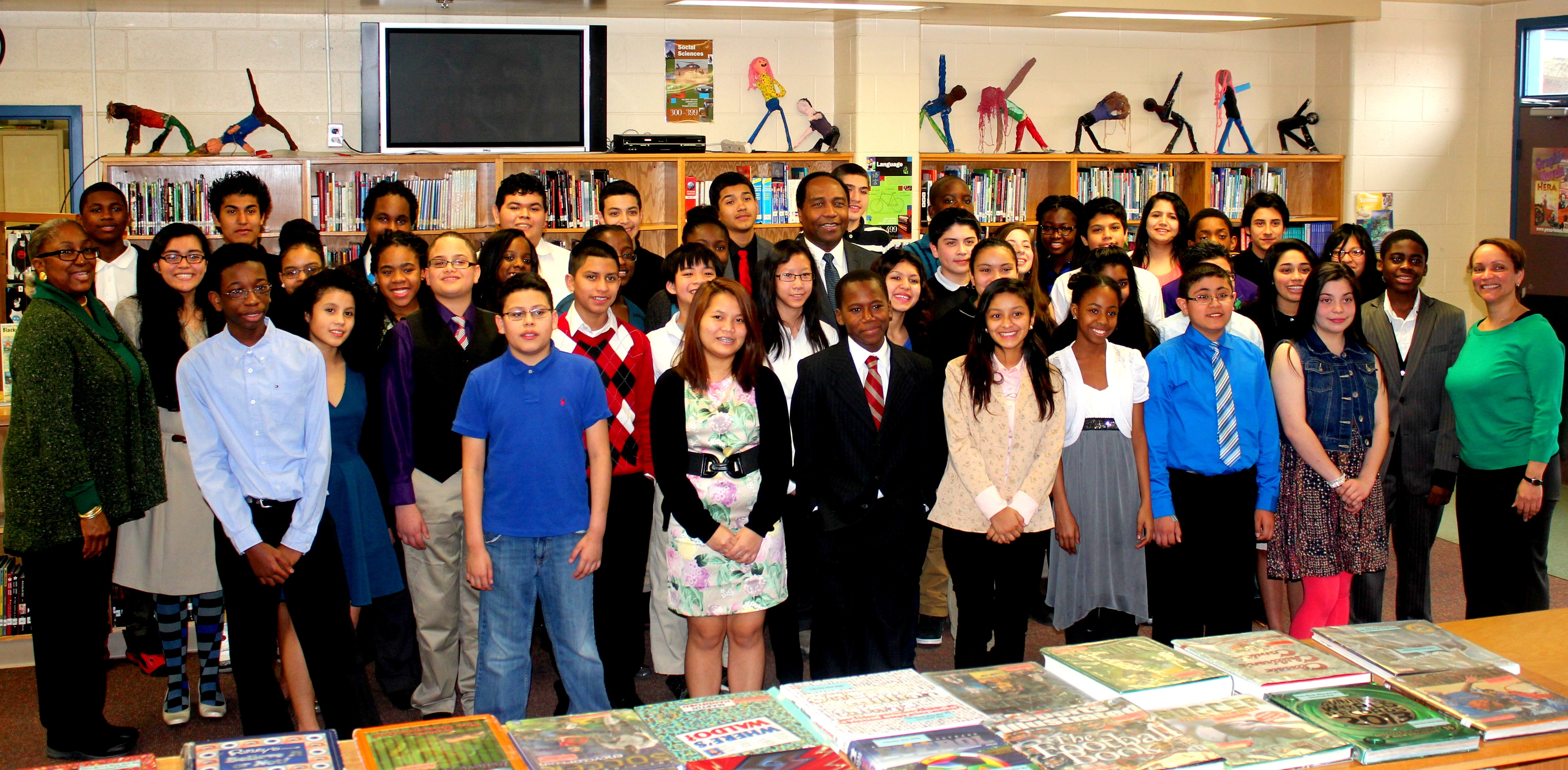
On February 12, NIDDK Director Dr. Griffin P. Rodgers shared his journey through the sciences with a group of students from Buck Lodge Middle School in Adelphi, Md. His talk and lively quiz show highlighted how science affects the students’ daily lives and how learning about science can improve their lives.
As part of the Nifty Fifty science speaker program sponsored by the upcoming USA Science & Engineering Festival, Rodgers talked about how his parents, teachers—and three of his close friends who had sickle cell disease—inspired his passion for science and sealed his desire to become a doctor and to focus on hematology.
Following his brief remarks, Rodgers hosted the students in an interactive quiz show focusing on some areas of science supported by NIDDK, including diabetes, obesity, physical activity, kidney disease and the human microbiome. To close the event, the students asked Rodgers questions ranging from how long it took for him to become a doctor to if there’s a cure for diabetes.
The 3rd USA Science & Engineering Festival is the largest science festival in the U.S. It will be held April 26-27 in Washington, D.C. The organization sponsors contests and school programs like the Nifty Fifty to spark the interest of youth in science, technology, engineering and math (STEM). This was Buck Lodge Middle School’s first time participating in the festival. Learn more about the 3rd USA Science & Engineering Festival and its expo.
2014 edition of NIDDK’s annual scientific report now available
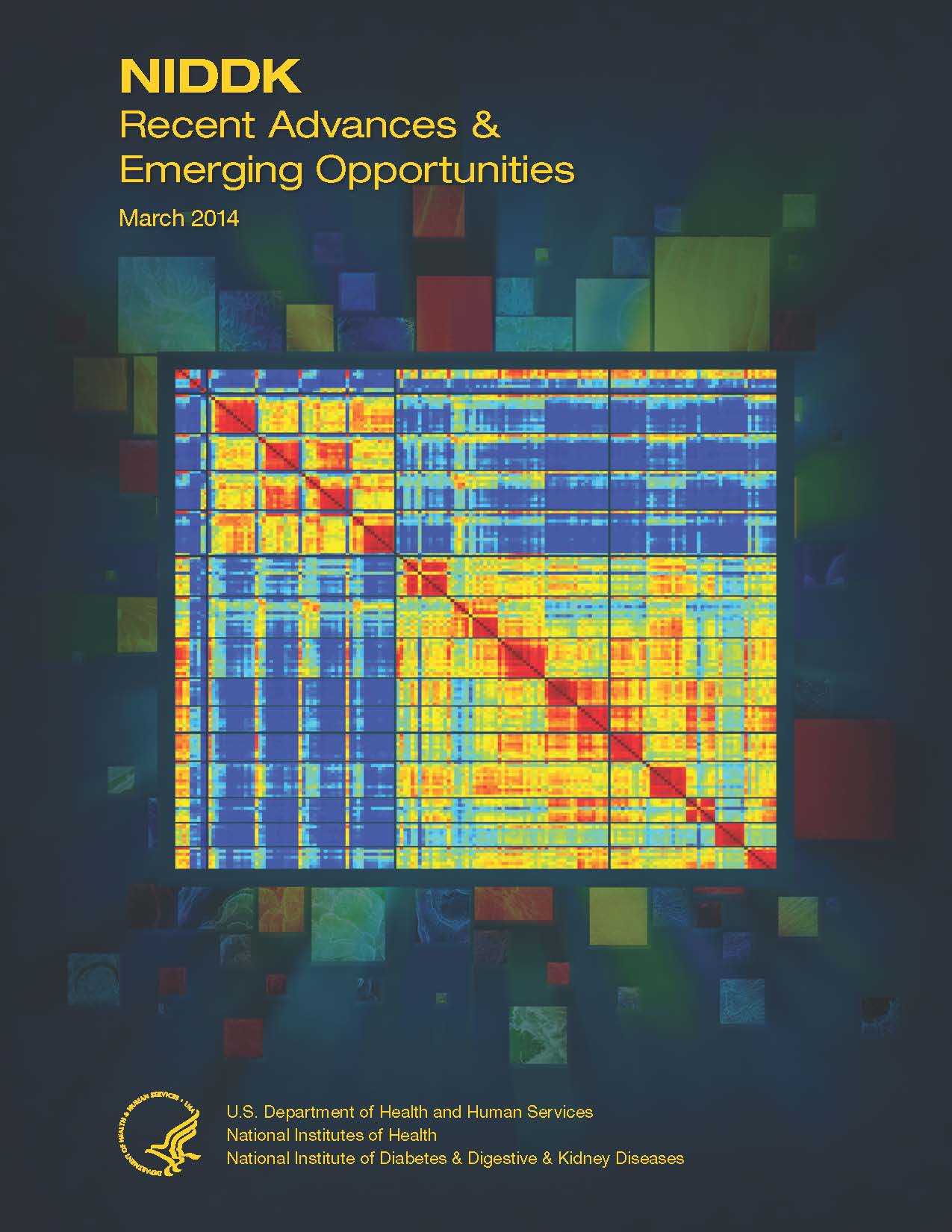
The NIDDK annual scientific report, NIDDK Recent Advances & Emerging Opportunities, is now available. This report highlights examples of NIDDK-supported research advances published in fiscal year 2013. It also includes stories of discovery—which trace research progress in specific areas over an extended time frame, personal stories of patients and scientific presentations made to the NIDDK’s National Advisory Council during the past year. The report also contains an overview of NIDDK’s collaborative efforts toward the development of an artificial pancreas; features 2013 Nobel Laureate and NIDDK grantee, Dr. James Rothman; and describes NIDDK programs such as the Drug-Induced Liver Injury Network and the Kidney Research National Dialogue.

